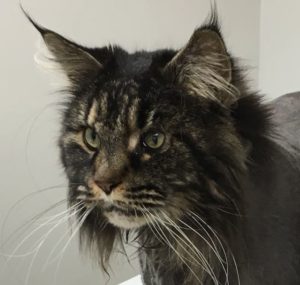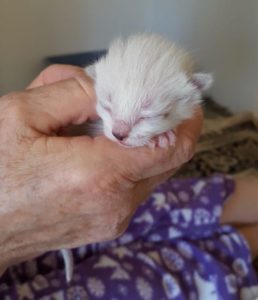What makes a friendly cat? A good pet cat?
Nature

- Nature is the genetic makeup of our cat.
- studies show that kittens of friendly fathers are more friendly
- there are breeds of cats known for their disposition
Nurture
- Environment
- Experience
- Diet
- Some of the things that can affect a kitten’s development.
Nurture is “In Addition to Genetics”
The science of epigenetics studies modifications to our DNA that don’t change the DNA sequence. The epigenome refers to chemical compounds that are attached to your DNA. Exposure to pollutants, what you eat and stress are some things that can result in certain compounds attaching to your DNA and turning particular genes on or off. These changes remain as cells divide and may pass from generation to generation.
What makes a friendly cat? A good pet cat?

Nurture and the “Sensitive Period”
- Our kitten learns most efficiently during the “sensitive period”,
- “Sensitive Period”: 2-7 weeks of age
- Rapid growth of neural cells makes learning easier.
- The learning that happens during the “sensitive period” prepares our kitten for the social and physical environment she is born into.
End of the Sensitive Period
At 7 weeks, this “golden time” of learning closes – the fear reaction becomes established in our kitten. She will become more cautious and careful from now on. Caution and wariness are crucial to her development as a solitary hunter. She will continue to learn and develop socially but will not be as open to new experiences.
Human contact
Kittens who are handled kindly and gently by a variety of humans during the “sensitive period” quickly learn to accept people and enjoy being with them. The positively socialized kitten generalizes what he learns about individual people to people in general.
Rough, insensitive handling can make our kitten aggressive and fearful of people for life.
Exposure to Human households
Kittens exposed to the environment in human homes during the “sensitive period” adapt quickly to electronic devices and appliances, other animals, and living indoors. They learn that the noise of the vacuum cleaner, although unpleasant, is not life threatening.
Diet
Kittens are more willing to try new foods at this time, although they follow their mother’s lead (if she is there) in choosing what to eat. Good nutrition helps our kitten develop.
The Feral Cat…
A feral adult cat is not accustomed to human handling or human environments. Human beings appear large, intimidating and potentially predatory to a cat who is not familiar with them; our behavior must also seem unpredictable.
The feral cat views each person/unfamiliar situation as potentially dangerous – he does not have an established frame of reference for people and their environment.
Feral cats do not have what makes a friendly cat; a good pet cat.
These cats may become accustomed to individual humans in a particular environment. They remain leery of humans in general and may react aggressively toward them due to fear. The same level of learning that is achieved from being introduced to humans and their homes during the “sensitive period” is difficult to make happen during a cat’s adult life. Successful integration takes longer, and can be very stressful for the cat in question.
Kittens exposed to people, human households, other animals (cats, dogs, etc) when they are 2-7 weeks old are generally more flexible in dealing with new situations. These cats are generally accepting of people and make better pets. When choosing a cat for a pet, try to find out as much as you can about what she may have experienced during her “golden time” of learning.


karen gifford says:
My Monte was a Tabby Cat, he had the lovely mark of an “M” on his forehead. Not sure I really know what Tabby is. Is it a breed by itself or could it be mixed breeds, can you give me some insight. He was a just such a sweet boy and he came to me fully grown. I am not sure how long he was out on his own but my dog
got friendly with him, she is a love and once Monte saw me with my dog he figured I was okay and came to me. After being in a large cat cage, to get him familiar
to being inside and meeting my other boy cat, he adjusted fast and liked being a lap cat. I think he must have been very special.